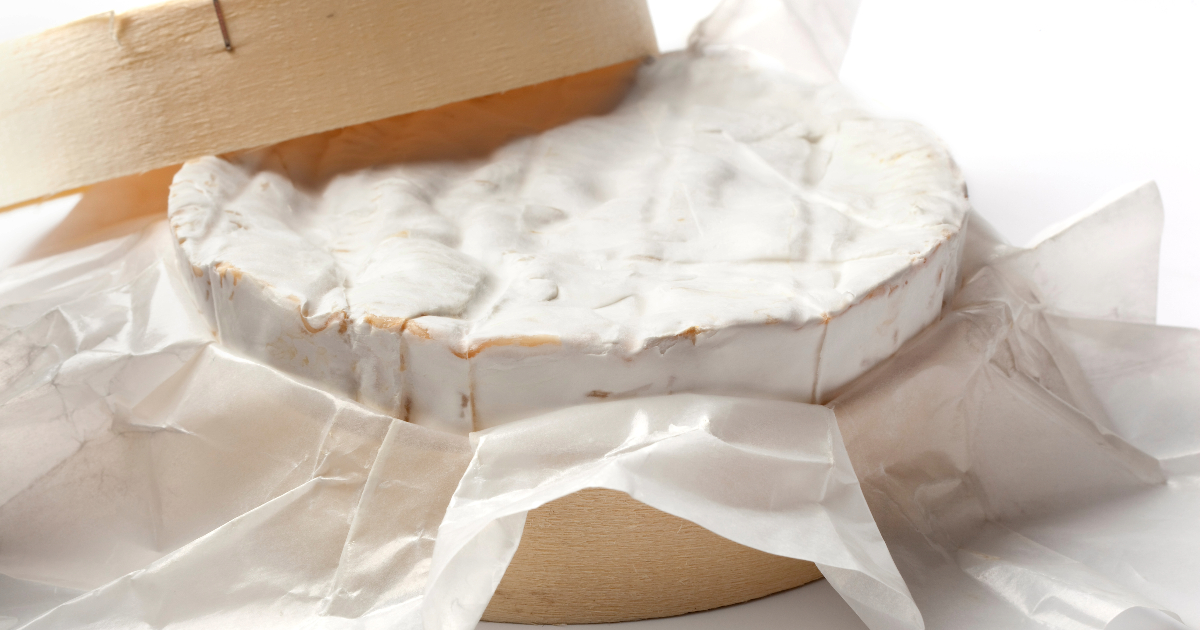Camembert and Brie are two of the most famous soft cheeses in the world. With their creaminess, subtle earthy flavors, and signature white bloomy rinds, these French cheeses share several similarities that can make them easy to confuse.

Camembert and Brie have distinct histories, production methods, sizes, textures, and even ideal food and wine pairings that set them apart.
A Brief History of Camembert and Brie
To understand what distinguishes Camembert from Brie, it helps to first look at the origins of each cheese.
Camembert hails from the northern French region of Normandy. According to legend, it was created in the late 18th century by a farmer named Marie Harel, who learned the technique from a priest taking refuge at her farmhouse. She adapted the process to make a bloomy rind cheese reflective of Normandy's terroir.
Brie has a much longer history that possibly dates back over a thousand years. It originated in the Île-de-France region outside Paris in an area historically known as Brie. References to Brie as a coveted cheese appear as early as the 8th century.
So while Camembert and Brie are now both made worldwide, Camembert is the younger French cheese by several centuries and comes from a different region of France than Brie.
How Are Camembert and Brie Produced?
The production process also impacts the flavor and texture of these two cheeses.
Camembert is made using richer cow's milk and a more robust culture. The curds are ladled into molds and lightly pressed, resulting in a denser cheese. It's then aged for around 3 weeks to develop its signature earthier, meatier flavor profile.
Comparatively, Brie starts with milk enriched with cream. The curds are cut differently and allowed to drain without pressing, creating a more delicate texture able to withstand longer aging. Brie ripens for 4-8 weeks to achieve a milder, sweeter flavor.
So Camembert's heartier production translates into a firmer texture and bolder taste, while Brie's softer make procedure gives it a creamier mouthfeel and subtle flavor.
Sizing Up Camembert Against Brie
When shopping for these cheeses, you'll notice an obvious size difference between Camembert and Brie:
- Camembert comes as a petite, thick disc around 4 inches wide and weighing 8-16 ounces. It's typically sold as a whole mini wheel.
- Brie is much larger, around 14 inches in diameter and weighing upwards of 6 pounds. It's generally cut into wedges from bigger wheels.
The smaller Camembert ripens faster, developing robust flavors quickly. Brie's larger size causes it to mature slowly, allowing more delicate flavors to emerge.
So size does matter when it comes to the unique taste and texture of these cheeses!
How Does the Flavor and Texture Compare?
The aging time and production methods result in Camembert and Brie having distinct flavor and mouthfeel:
- Camembert has a richer, meatier flavor with notes of mushrooms, barnyards, and garlic. Its texture is dense and sliceable when young, becoming oozy and runny when fully ripe.
- Brie is lighter and sweeter-tasting, with flavors of cream, butter, and nuts. It has a smooth, silky texture that oozes deliciously when at peak ripeness.
Camembert's robustness stands up better to heartier flavors and wines, while Brie's refinement pairs best with lighter fare. Discerning palates can detect the subtle nuances that make each cheese special in its own right.
Ideal Pairings: Foods and Beverages
Because of their unique profiles, Camembert and Brie each shine when paired thoughtfully:
Camembert Pairs Well With:
- Fruits: Dried apricots, figs, oranges, grapefruit
- Breads: Hearty rye, whole wheat sourdough, baguettes
- Meats: Prosciutto, salami, smoked turkey
- Vegetables: Roasted beets, grilled eggplant, tomato jam
- Drinks: Bold red wines, hard ciders, dark beer, black tea
Delicious Partners for Brie Include:
- Fruits: Fresh grapes, berries, pears, green apples
- Nuts: Walnuts, almonds, hazelnuts
- Breads: Flaky croissants, buttery crackers, baguettes
- Spreads: Honey, jams, chutneys
- Drinks: Light white wines, sparkling wines, wheat beers
Trying both cheeses with and without accompaniments allows you to fully experience their range.
FAQs
Can you eat the rind on Camembert and Brie?
Yes! The white bloomy rind on Camembert and Brie is edible and safe to eat. It offers a deeper, earthier flavor and contrasting texture to the smooth interior. Some people prefer to slice it off, but eating the rind is a matter of personal taste.
Which cheese has more fat - Camembert or Brie?
Brie tends to be higher in fat since cream is added during production. Regular Brie contains about 60% milk fat. By comparison, traditional Camembert is around 45% milk fat. So Brie usually has a richer, creamier mouthfeel.
Why does Brie have more of a mushroomy flavor?
The white surface mold used to make bloomy rind cheeses like Brie and Camembert lend an earthy, mushroom aroma. Brie's larger size causes it to age slowly under this mold for weeks, allowing those woodsy notes to develop. The extended maturation gives Brie a more pronounced mushroom essence.
Can you bake Camembert or Brie?
Yes! Baking intensifies the flavors of these cheeses beautifully. The high heat softens the texture and allows the cheeses to get creamy and gooey throughout. Baked Brie is a popular appetizer, often topped with nuts, fruit, or caramelized onions.
Conclusion
At a cursory glance, Camembert and Brie may seem alike. However, understanding how factors like origin, process, size, and age contribute to each cheese's distinct flavor, texture, and ideal pairings allows you to better experience their unique deliciousness.

